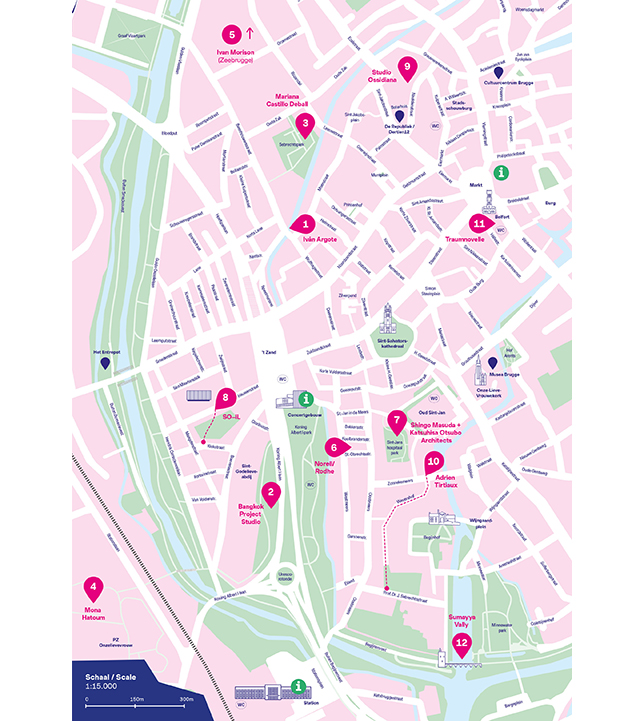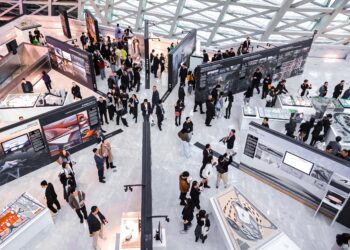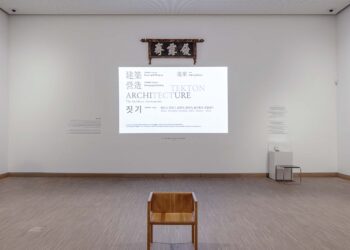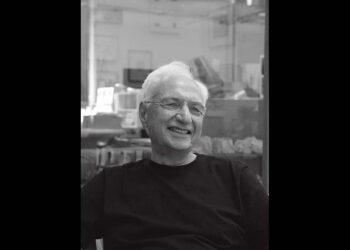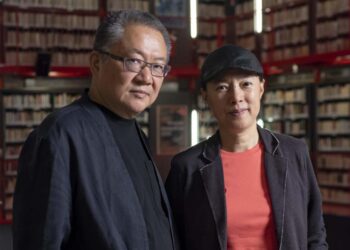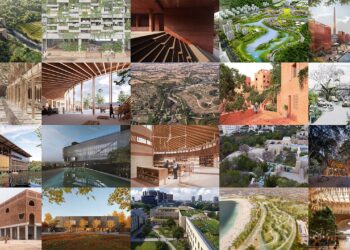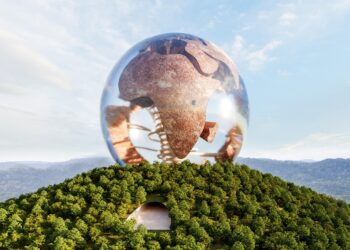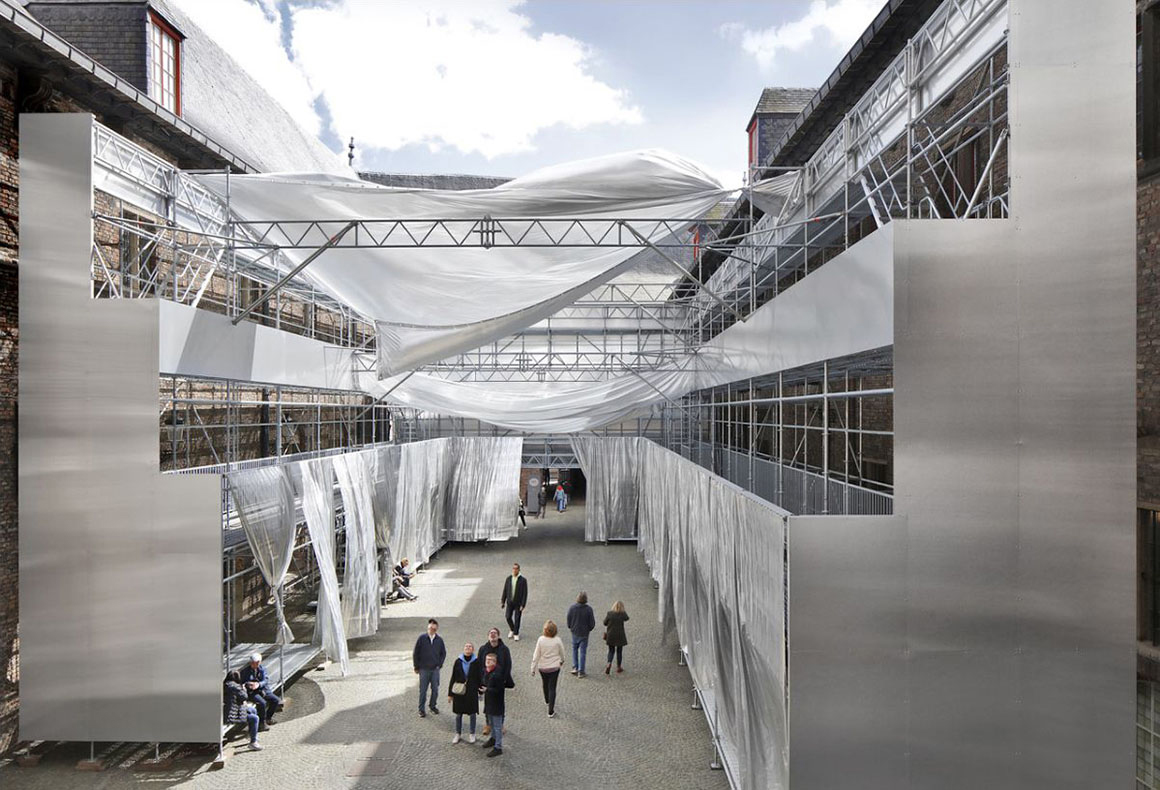
The Bruges Triennale 2024 opened on April 13th. For the fourth year, 12 contemporary art and architectural installations fill the streets of Bruges, under the theme of ‘Spaces of Possibility’. It aims to explore how a UNESCO World Heritage city, Bruges, can embrace and address concepts of change and sustainability, and collectively contemplate the future of urban spaces we inhabit. The event is co-organized by the Bruges Cultural Center, De Republiek, Het Entrepot, and the Bruges Museums, and is directed by Shendy Gardin and Sevie Tsampalla.
The Bruges Trienniale has progressed from its inaugural edition in 2015, which envisioned the fictional idea of the city as a Megalopolis, followed by the metaphor of the Liquid City in 2018 and Bruges between dream and TraumA in 2021. This year, it seeks to discuss the upcoming future. Over the past three years, the world has experienced unforeseen crises ranging from climate change, housing issues, health, to structural shifts in society. In the midst of these changes, characterized by opportunism, extractivism, and construction fever, we are compelled to seek new methods for long-term symbiosis.
The role of public space is essential to this. How can cities, as spaces for movement, encounters, intersections, the birth of new things, serendipity, and freedom, be used to prepare for the future? Bruges, where the Triennale is held, has a history dating back to the 9th century as a medieval city, a center of Flemish art, and a tourist destination full of Gothic architecture, and was declared a World Heritage Site in 2000. The theme of this year’s Triennale, “Spaces of Possibility,” explores how Bruges’ quality of life can be preserved in the face of the challenges of preserving its heritage, while at the same time dealing with the inconveniences that come with it. It also explores how to protect the city as a city and how to utilize its unused or under-appreciated places and areas.

The twelve architectural firms and artists invited to the Trienniale explore various aspects of Bruges, walk around Bruges, peering into its niches and adding their own interpretations. As ‘practitioners of the possible,’ they seek out the beauty of the city often overlooked, develop its potential, and propose new spatial works across the center, West Bruges, and Zeebrugge areas.
Traumnovelle, based in Brussels, redefines the courtyard of the 13th-century town hall, transforming it into a gathering place with industrial structures installed to a height of three floors, providing a place for people to gather at any time. Lebanese-British artist Mona Hatoum has created a garden in the Onzelievevrouw asylum garden outside the city walls. The uneven ground, filled with locally collected stones covering every surface, creates tension as a space that exists between the surrounding environment and its history.
Who? / Iván Argote
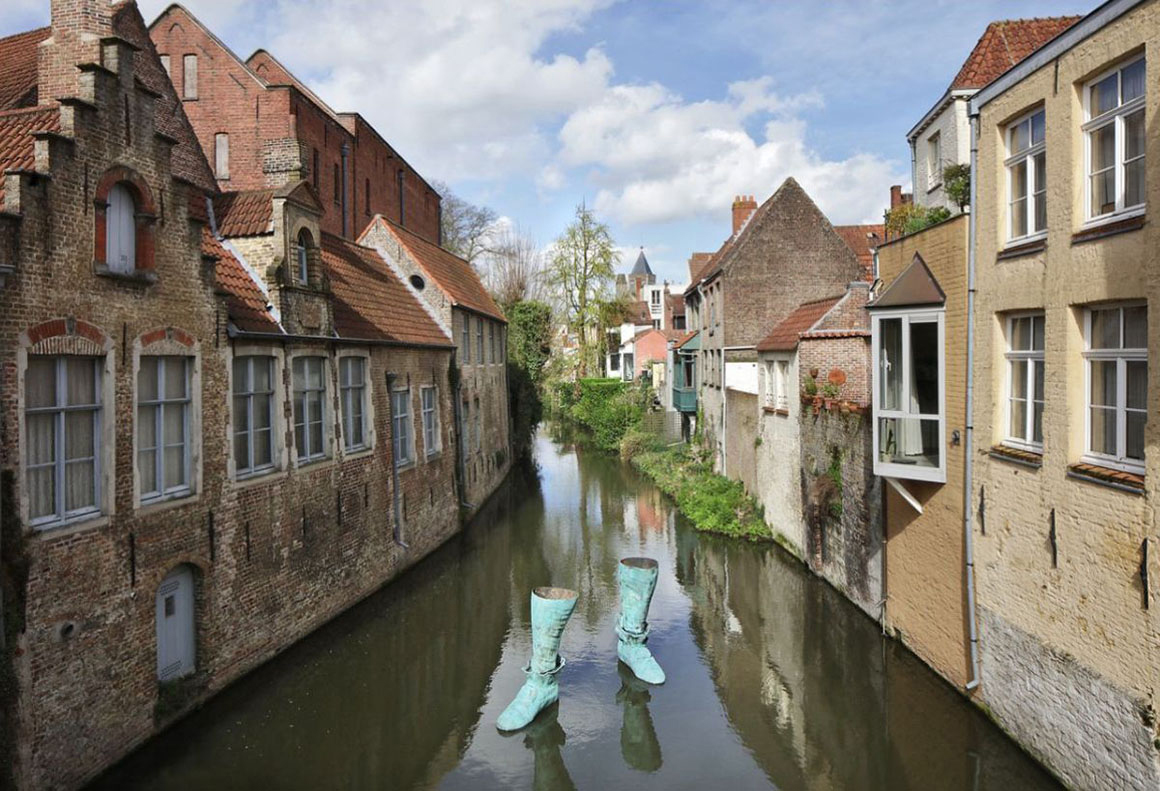
The tower of balance / Bangkok Project Studio

Firesong for the bees, a tree of clay / Mariana Castillo Deball

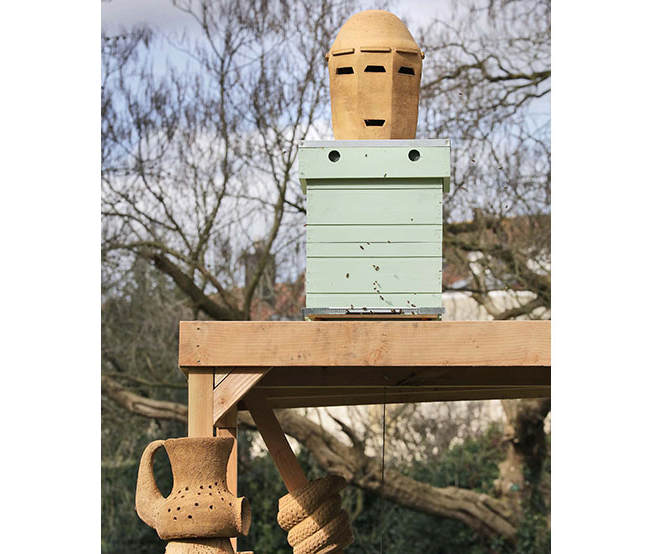
Full Swing / Mona Hatoum
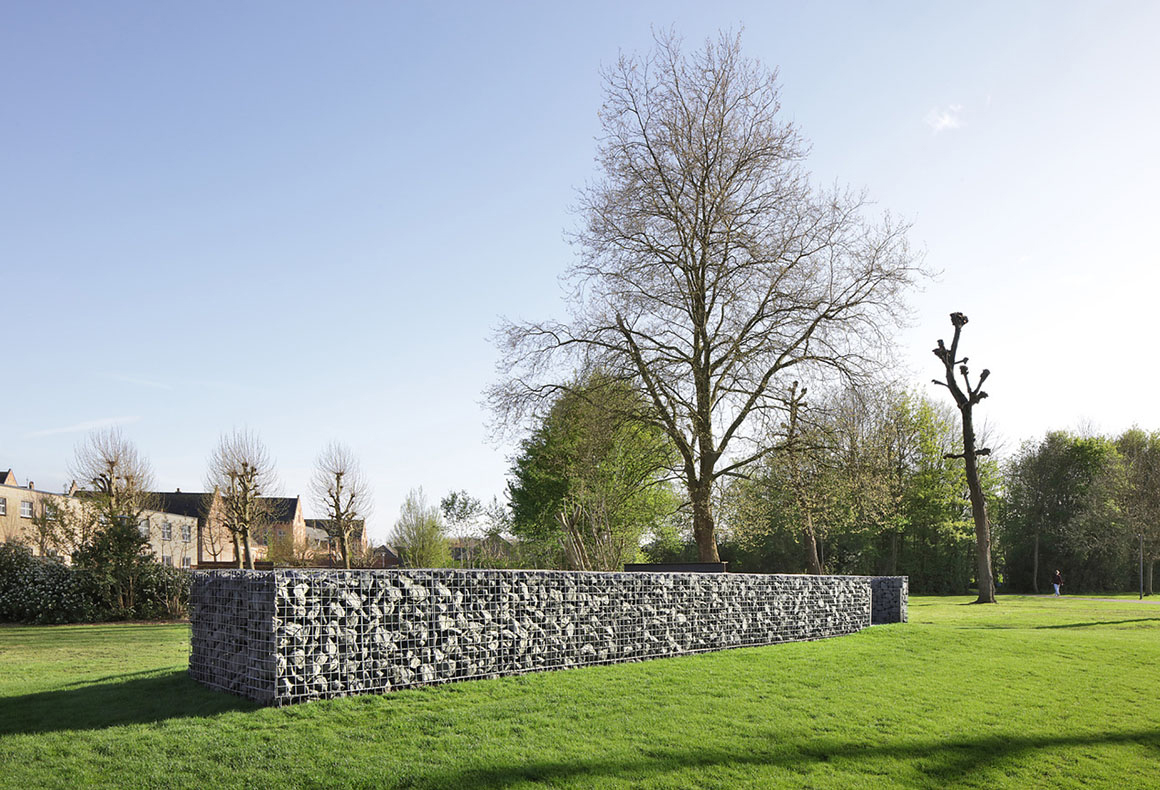
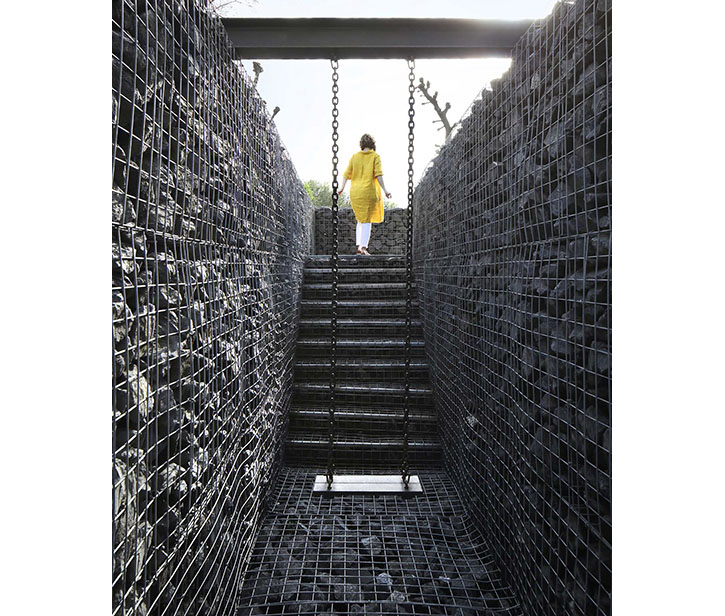
Star of the Sea / Ivan Morison
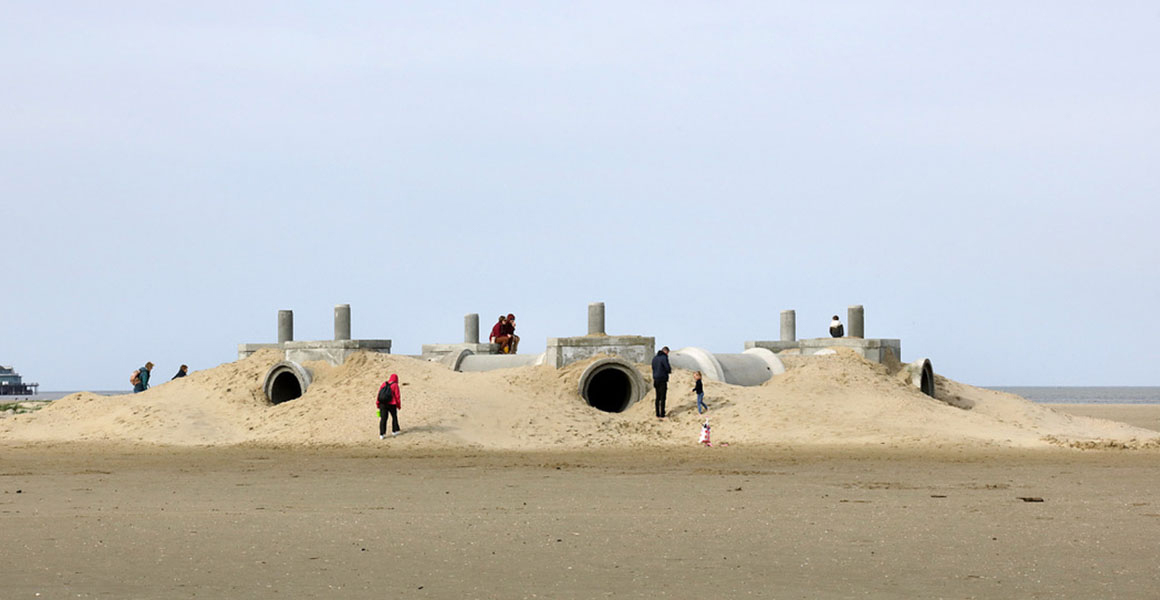

Raamland / Norell/Rodhe

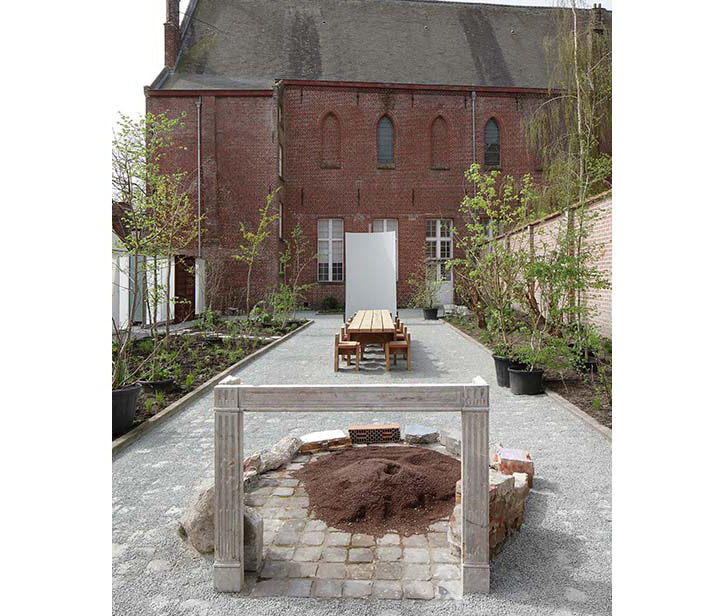
Empty drop / Shingo Masuda + Katsuhisa Otsubo Architects
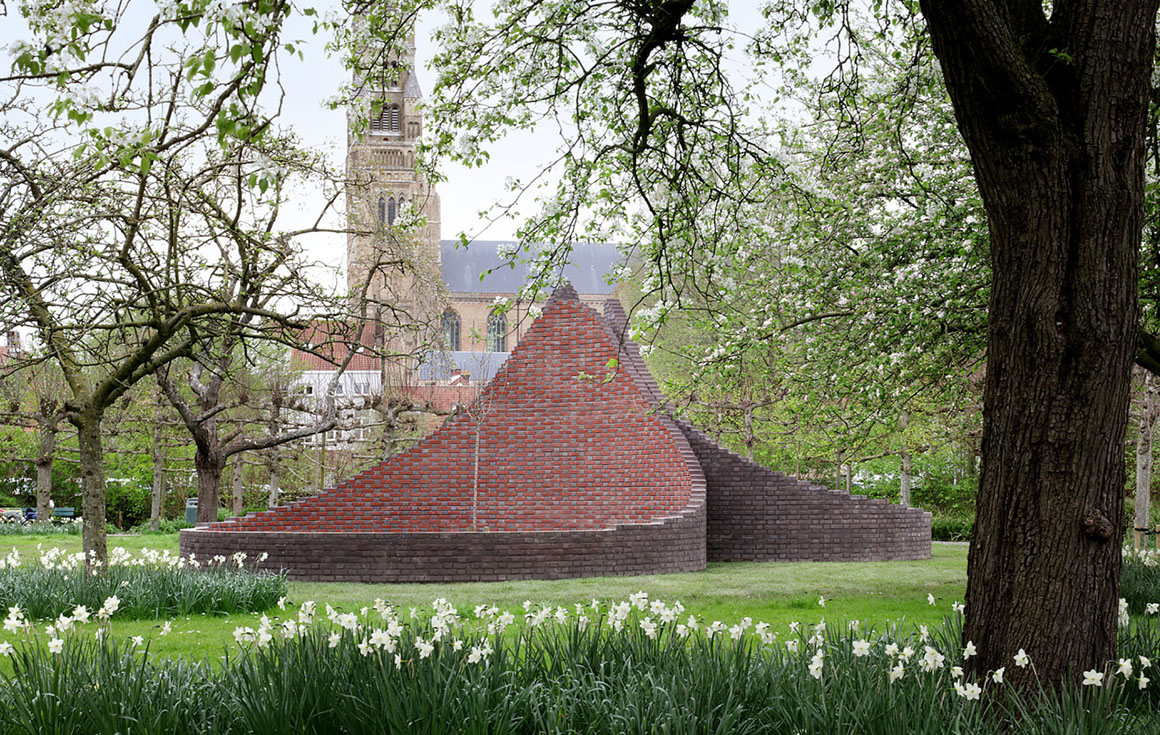
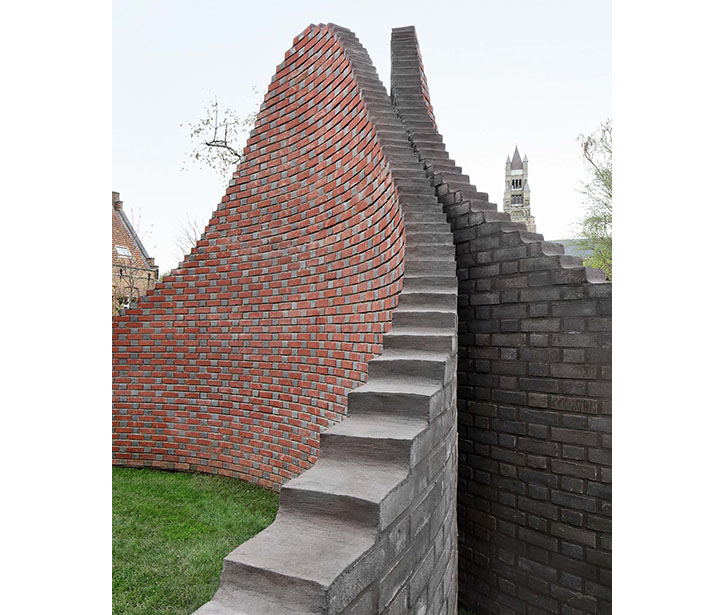
Common Thread / SO–IL
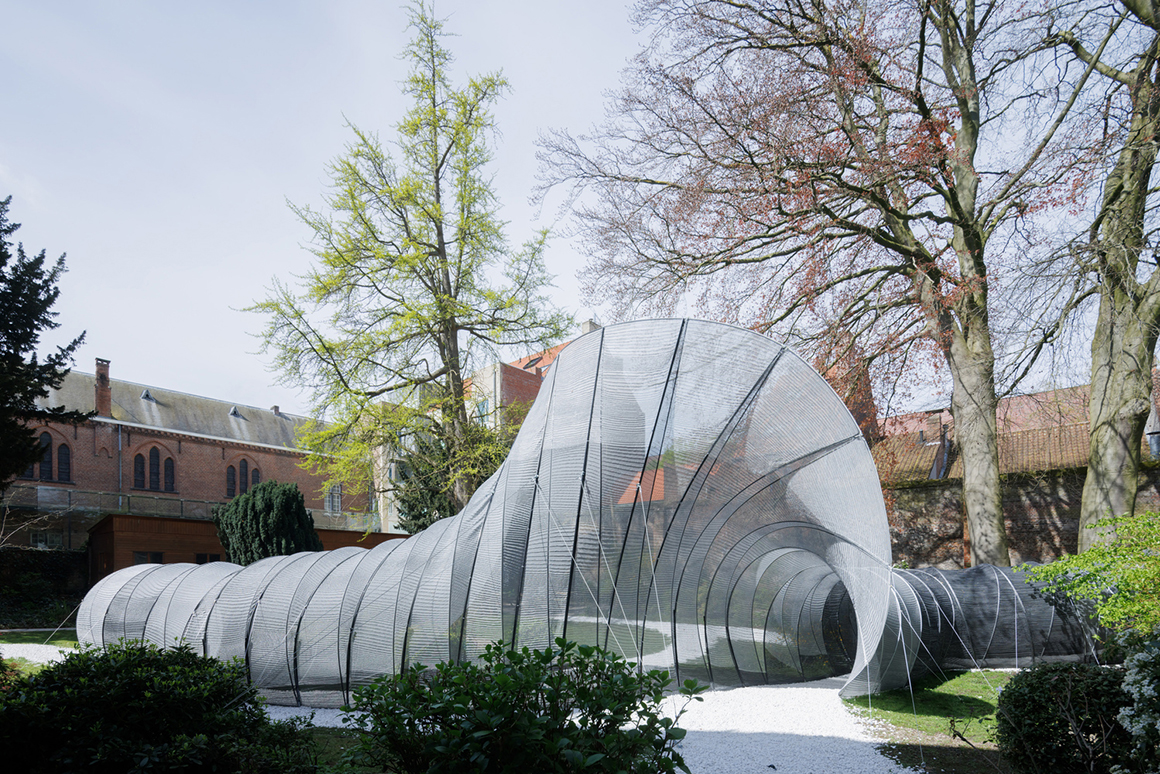

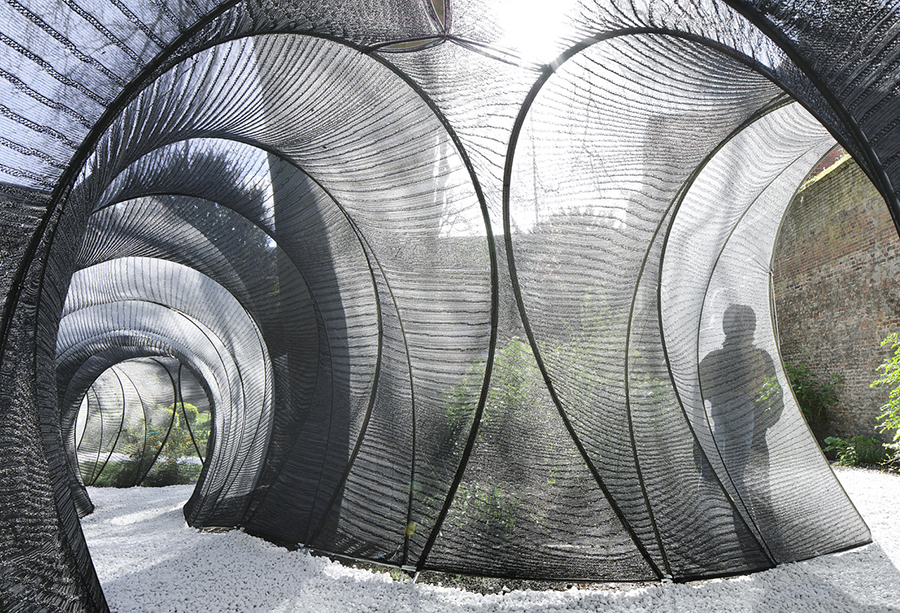
Earthsea Pavilion / Studio Ossidiana
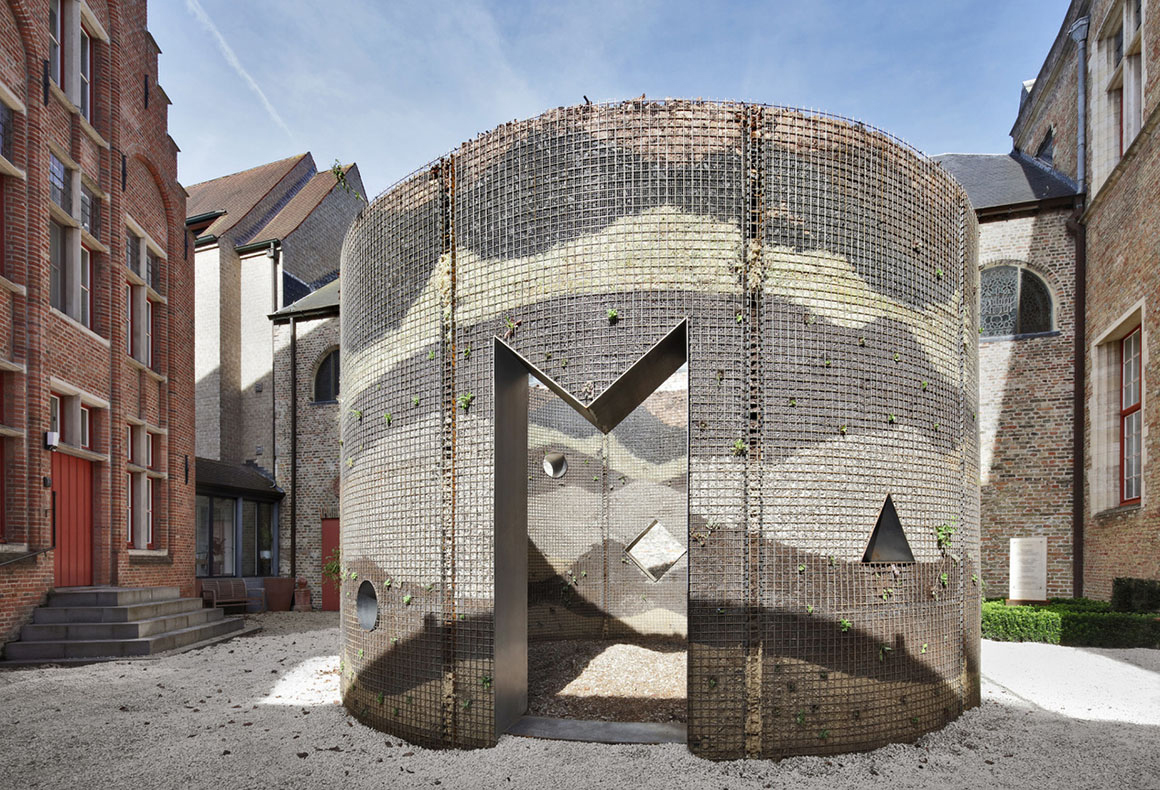
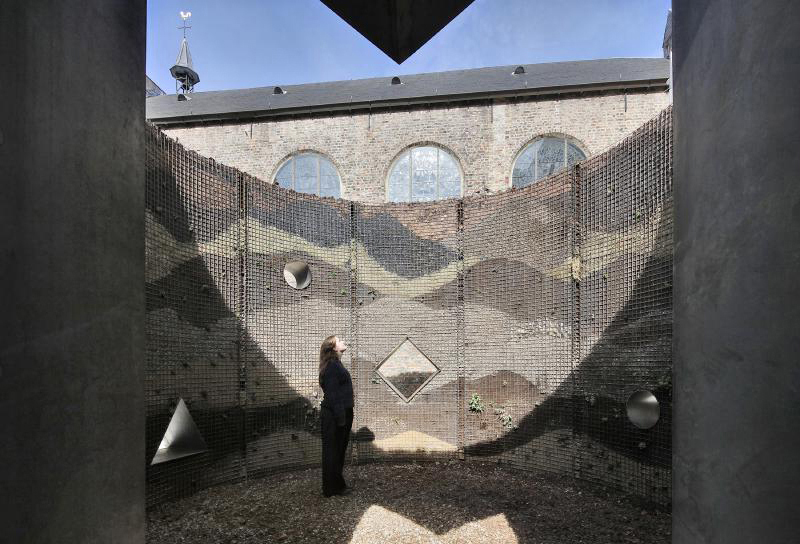
Under the Carpet / Adrien Tirtiaux
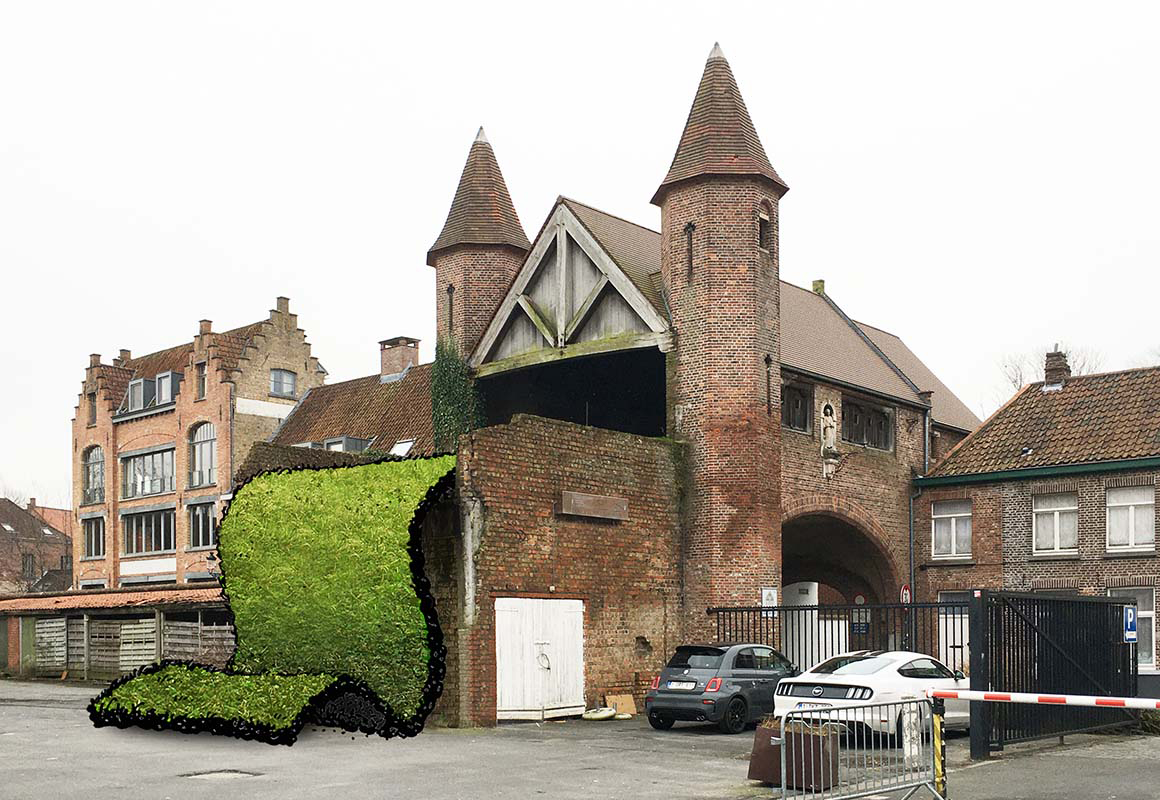
The Joyful Apocalypse / Traumnovelle


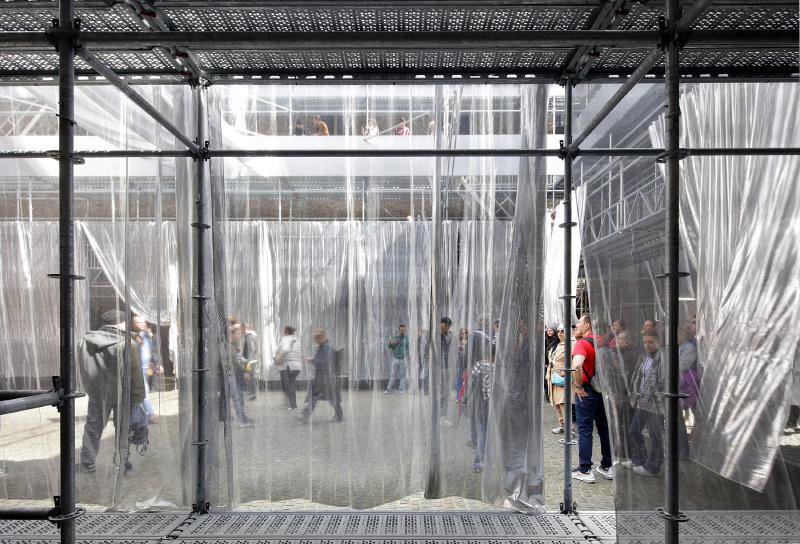
Grains of Paradise / Sumayya Vally
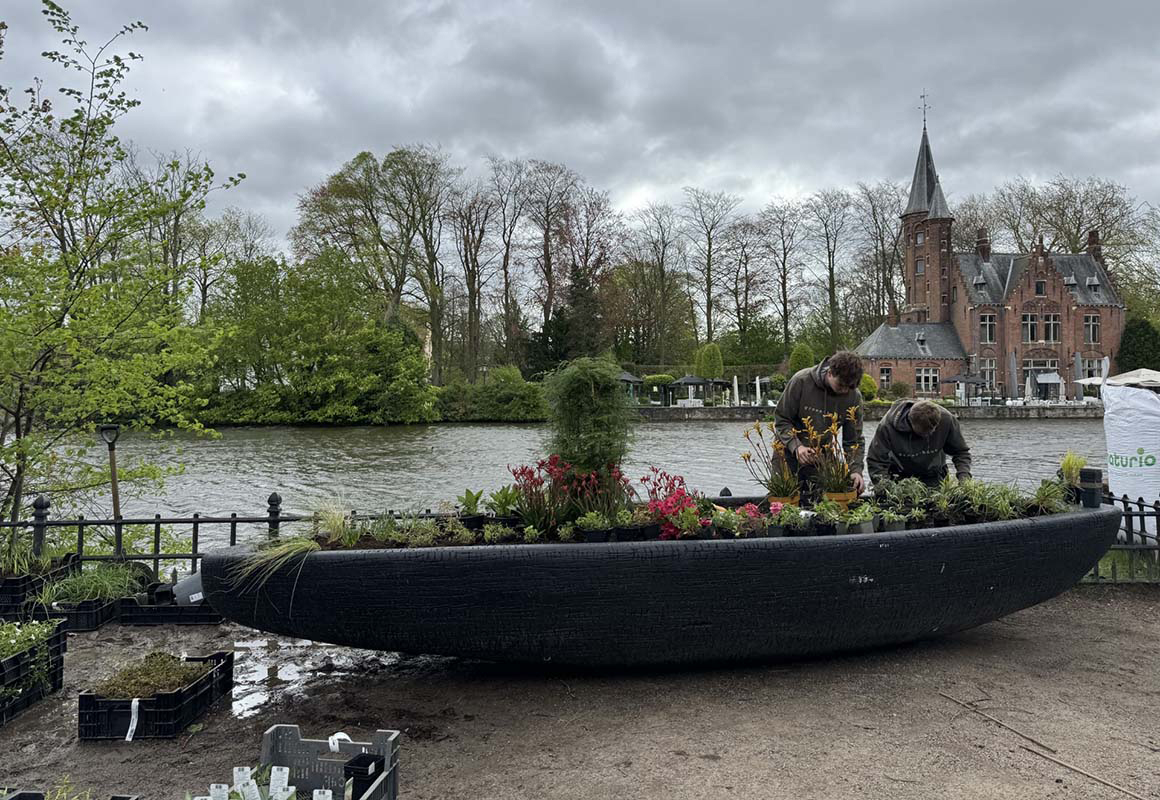
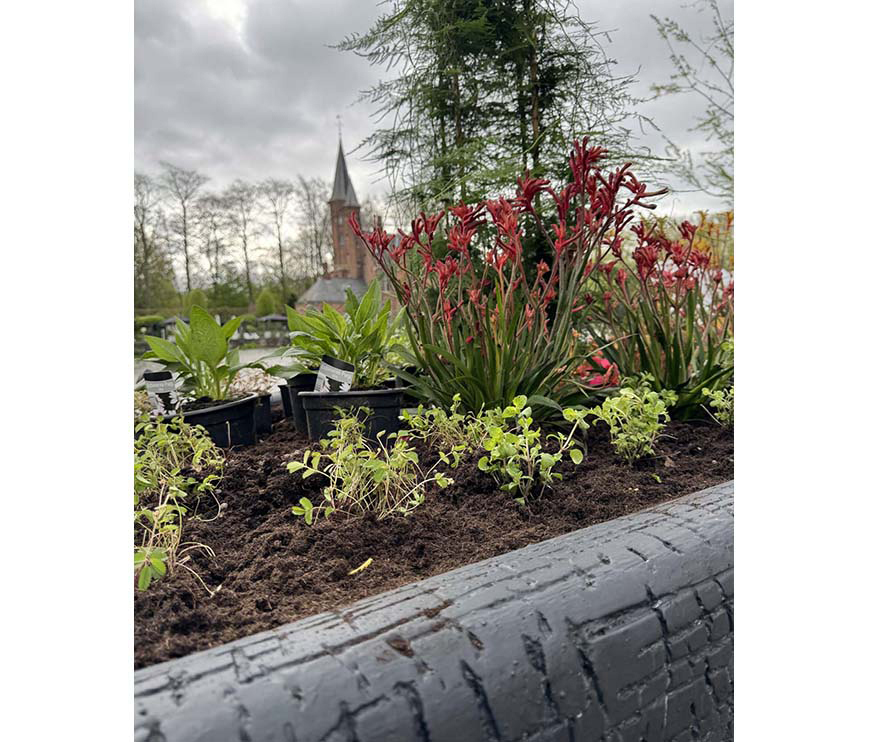
The Swedish architecture firm Norell/Rodhe has created a dynamic meeting place between Oostmeers and Westmeers. The term ‘meers’ in the local names means ‘marsh,’ indicating that the area was originally a marshland, now surrounded by urban areas with brick buildings from the 1970s. They’ve used recycled wood to frame, installed plywood walls to guide natural pathways, and created a garden inside, providing a comfortable environment for people to rest. New York based architecture and design firm SO-IL has created a fabric pathway structure in the courtyard of the Capuchin monastery. The once hidden courtyard of the monastery becomes a place of exploration, reconnecting with the streets of Bruges. The fabric used is made using techniques passed down by Bruges women through generations, and enhanced with modern 3D technology to intersect the past, present, and future.
‘Spaces of Possibility’ proposes another cityscape from what it is. Connecting bridges between extensive and collective thinking aimed at the local context, the city, and potential futures, it utilizes the power of art and architecture as a means to transform space. The experiment of discovering a new city in Bruges continues until September 1st.





























